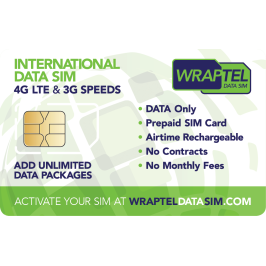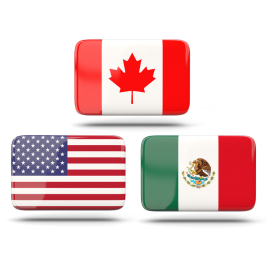How to Get Reliable Internet While Camping, Hiking, and Off-Grid Traveling
Published: 27/01/2025
Cellphone signals can fade quickly beyond city limits. Whether it’s about ensuring safety during a backcountry hike or capturing the perfect view for social media, reliable internet access plays a key role in modern outdoor adventures. At Wraptel, we believe heading off-grid doesn’t have to mean going completely offline. With the right tools and preparation, travelers can confidently explore new terrain while maintaining the connectivity they need.
This article offers a comprehensive roadmap for campers, hikers, and off-grid explorers looking to stay online wherever they roam. Along the way, we’ll highlight practical tips for overcoming common connectivity challenges in remote areas and explain how the Wraptel Data SIM stands out as a flexible solution.
From safety to convenience, being online in the wild can open up countless possibilities without sacrificing the thrill of outdoor exploration. Get ready to discover how seamless connectivity can enhance every moment spent off the grid.
Key Takeaways
- Reliable internet is essential for off-grid adventures – It enhances safety, navigation, and remote work while allowing seamless communication.
- Connectivity challenges vary by location – Terrain, weather, power availability, and network congestion can impact signal strength.
- Multiple connectivity solutions exist – Options include traditional cellular, portable hotspots, satellite internet, and global SIM/eSIM solutions like Wraptel Data SIM.
- Wraptel Data SIM provides flexible, multi-network coverage – It automatically connects to the strongest available network, offering seamless connectivity across different regions.
- Optimizing connectivity requires planning – Using power banks, signal boosters, offline maps, and data-saving techniques ensures a reliable and efficient internet experience while off-grid.
Did you know your phone works harder (and drains battery faster) in weak signal areas? If you``re heading off-grid, always carry a power bank or solar charger to stay connected!
The Importance of Staying Connected in the Great Outdoors
Staying online in remote locations isn’t just about convenience. In many cases, it can be a true lifesaver. Emergency situations can arise unexpectedly, from sudden changes in weather to medical incidents that require immediate attention. When standard cell coverage fails, having an alternative means of communication allows adventurers to call for help or receive critical updates on rapidly shifting conditions.
On a more day-to-day level, connectivity ensures friends and family know your location and well-being, especially during extended trips. Even when venturing into isolated areas, the ability to access real-time maps and GPS services can prevent navigational errors that waste time and energy. Additionally, many travelers now combine work with leisure, making reliable internet indispensable for remote tasks or staying in touch with colleagues.
By addressing both safety and modern lifestyle needs, dependable connectivity has become an essential part of any off-grid excursion. With the right approach, each adventure can remain as connected as it is thrilling.
Common Connectivity Challenges Off the Grid
Venturing beyond populated areas often leads to an immediate drop in signal strength. Dense forests, mountainous regions, and wide-open deserts create formidable barriers to reliable connections. In many remote spots, cell towers are sparse or nonexistent, making it difficult to maintain a stable link to the outside world.
Adverse weather further compounds these challenges. Heavy rainfall, snowstorms, or high winds can disrupt cell signals and damage network infrastructure. Even if coverage remains theoretically available, the practical experience might be slow or intermittent when nature is at its harshest. Power management is another critical aspect: smartphones, hotspots, and other devices drain batteries more quickly when searching for weak signals. Without a steady source of electricity, extended camping or hiking trips require careful planning and sufficient backup power solutions.
Network congestion is also a factor, particularly in popular campgrounds or scenic areas that attract seasonal crowds. When large numbers of visitors connect to the same limited infrastructure, speeds can drop dramatically. Overloaded networks may struggle to handle multiple simultaneous video calls or data-heavy tasks. This can be frustrating for travelers who need to work remotely or simply want consistent internet access. Understanding these common obstacles is the first step toward finding solutions that ensure seamless off-grid connectivity.
Evaluating Connectivity Solutions
Various solutions exist for adventurers needing off-grid connectivity. Traditional cellular plans rely on local towers, which can be unreliable in remote areas. While local SIM cards may provide cheaper rates, swapping them frequently is inconvenient for travelers on the move. Roaming charges from home carriers can also become costly.
Portable hotspots (MiFi devices) are easy to set up and can connect multiple devices. However, performance depends heavily on a single carrier’s coverage, and data fees can add up when crossing borders.
Satellite phones offer near-global coverage, suitable for extremely remote places. Yet the equipment and monthly fees are expensive, and speed or latency may be less than ideal.
Global SIM or eSIM options are popular for their flexibility and multi-carrier access, automatically connecting to the strongest local network. This approach can be especially advantageous for those traveling across multiple regions.
Below is a brief comparison of common connectivity solutions:
Introducing Wraptel Data SIM
Wraptel offers a global Data SIM designed to simplify life for travelers, digital nomads, and outdoor enthusiasts. Our mission is to make reliable internet access attainable across the globe. By partnering with multiple carriers, we ensure that users connect to the strongest network no matter where they roam.
Multi-network support is a key advantage. If one carrier’s signal is weak, Wraptel Data SIM automatically switches to a better option. Whether trekking across mountain ranges or camping near secluded lakes, our solution seeks out the best coverage available.
Setup is straightforward. After receiving the SIM or eSIM, follow our clear instructions, insert it into an unlocked device, and configure data settings. Flexible packages address light browsing, heavy streaming, or anything in between, letting each traveler choose what’s best for them.
Customers also appreciate our transparent pricing, free from hidden roaming fees. Instead of juggling multiple local SIMs, one Wraptel Data SIM offers consistent performance and predictable costs in different countries. This approach saves time and money, making it easier to stay connected while focusing on new adventures.
Through reliability and affordability, Wraptel Data SIM has become a trusted companion for off-grid explorers, ensuring that essential communication, navigation tools, and photo sharing remain accessible wherever the journey leads.
Setting Up Wraptel Data SIM for Off-Grid Adventures
Purchasing a Wraptel Data SIM begins with a visit to our website, where you can select a physical SIM or an eSIM option. Once the package arrives (or the eSIM is downloaded), the activation process can be completed online in just a few steps. Register an account, input the required details, and follow the prompts to link the SIM to your device.
Choosing the right data plan depends on the length of the trip and the anticipated data usage. For a weekend camping excursion where only light browsing and GPS services are needed, a smaller package may suffice. However, adventurers planning extended journeys—or who require bandwidth for video calls and streaming—might opt for higher-volume plans. Our website offers a usage calculator to help estimate daily needs.
Device compatibility is crucial. Ensure that your phone, tablet, or dedicated hotspot device is unlocked, allowing the Wraptel Data SIM to function properly. On iOS and Android devices, configuring APN settings is usually straightforward—detailed instructions guide you through each step. Before heading off-grid, it’s wise to run a test by making a data connection and verifying signal strength at home. This check allows any potential issues to be resolved before the real adventure begins.
Tips for Optimizing Your Off-Grid Connectivity
Even with a robust solution like Wraptel Data SIM, certain best practices can enhance internet access. The first step is to search for higher ground or open spaces, as dense tree coverage and canyon-like terrain often weaken signals. If using a portable hotspot, consider external antennas or signal boosters that can amplify weak cellular receptions.
Power management is another critical factor. Keeping devices charged is essential, so plan ahead with portable power banks or solar panels. It also helps to activate battery-saving modes on smartphones and disable background apps that consume data. Turning off features like Wi-Fi scanning and Bluetooth when not in use can further preserve power.
When it comes to data conservation, offline maps and caching content in advance can make a big difference. Many navigation apps allow users to download regional maps for offline use. Additionally, limiting streaming quality or postponing large file downloads until stronger connectivity is available prevents unnecessary data consumption. For essential communications, stick to text-based chats when possible—video calls in areas with marginal coverage can quickly drain both data and battery resources.
Lastly, keep an eye on the weather forecast. Extreme conditions such as storms or heavy snow can impact signal strength and device performance. Staying informed ensures you can adapt your connectivity approach as needed.
Security and Data Privacy Best Practices
Venturing into remote areas does not exempt travelers from digital threats. Basic cybersecurity measures remain essential for anyone relying on mobile data. A virtual private network (VPN) adds an extra layer of encryption to protect sensitive information, especially if you connect to public Wi-Fi in visitor centers or roadside cafes.
Regularly updating device software is equally important. Operating system patches often include critical security fixes, and delaying them increases vulnerability to malware. Consider installing reputable antivirus or anti-malware apps to defend against potential attacks.
Strong passwords and multi-factor authentication provide further safeguards. This combination makes it harder for intruders to access personal accounts, even if passwords are compromised. Whenever possible, avoid auto-login features in case your device is lost or stolen during your trip.
Lastly, be mindful when clicking links or downloading files. Phishing schemes can target unsuspecting users with malicious attachments or fraudulent websites. Staying alert and proactive with security helps ensure a safe and productive off-grid experience.
Real-Life Scenarios and Success Stories
One backpacker ventured into the remote wilderness of the Pacific Northwest with a Wraptel Data SIM in a compact hotspot device. Midway through a multi-day hike, sudden thunderstorms forced a change in plans. Thanks to the reliable data connection, the traveler could track weather updates and find a safer route to descend, avoiding hazardous conditions. Staying connected also made it possible to reassure friends and family back home that everything was under control.
Another user, a digital nomad traveling across national parks in an RV, relied on Wraptel Data SIM for daily video conferences. Despite regularly moving between states and encountering varied terrains, they reported stable connectivity and minimal interruptions. The flexibility of switching carriers in different regions helped maintain a steady signal, enabling them to keep up with work demands.
Feedback from these off-grid explorers consistently highlights the peace of mind that comes with knowing a signal is within reach. Whether it’s a solo hiker at a mountainous summit or a family parked in a secluded campsite, the ability to communicate can transform stressful situations into manageable ones. Real-world applications show that robust, adaptable connectivity remains a key ingredient in making outdoor adventures both safe and enjoyable.
Conclusion: Off-Grid Internet
Having reliable internet during outdoor excursions is more than a luxury—it can be a lifeline. Each trip brings its own surprises, and staying connected ensures travelers can adapt quickly to shifting circumstances. Whether the goal is to keep in touch with loved ones, coordinate a safe route in unforeseen weather, or maintain productivity on the road, a stable data connection enhances every facet of the journey.
Wraptel Data SIM was created to meet these demands, offering coverage that spans multiple networks and countries. By simplifying the setup process and keeping pricing transparent, our aim is to make dependable connectivity available to anyone ready to roam. Testing your setup at home, packing sufficient power sources, and using strategies to conserve data are small steps that pay big dividends once you head into the wild.
Off-grid adventures have a remarkable way of refreshing the spirit, and digital tools don’t have to detract from that experience. Used wisely, they provide confidence, security, and a way to share unforgettable moments with the world. Consider trying Wraptel Data SIM for an upcoming trip, and discover how maintaining a reliable connection can open up new horizons without compromising the essence of the great outdoors.
Stay connected anywhere your adventures take you—get your Wraptel Data SIM and eSIM today for seamless, multi-network coverage worldwide!
Further Reading
- 7 Off-Grid Internet Solutions for Staying Connected Anywhere: This article explores various methods to maintain internet connectivity in remote locations, including fixed wireless technology and cellular providers.
- Off Grid Communication: Staying Connected Off the Grid: This article discusses reliable communication devices essential for safety and staying in touch with loved ones during off-grid living or travel.
- The Off Grid Internet Guide: 6 Best Ways to Stay Connected: An informative piece outlining the best methods to maintain internet access in off-grid situations, considering factors like location and technology.






